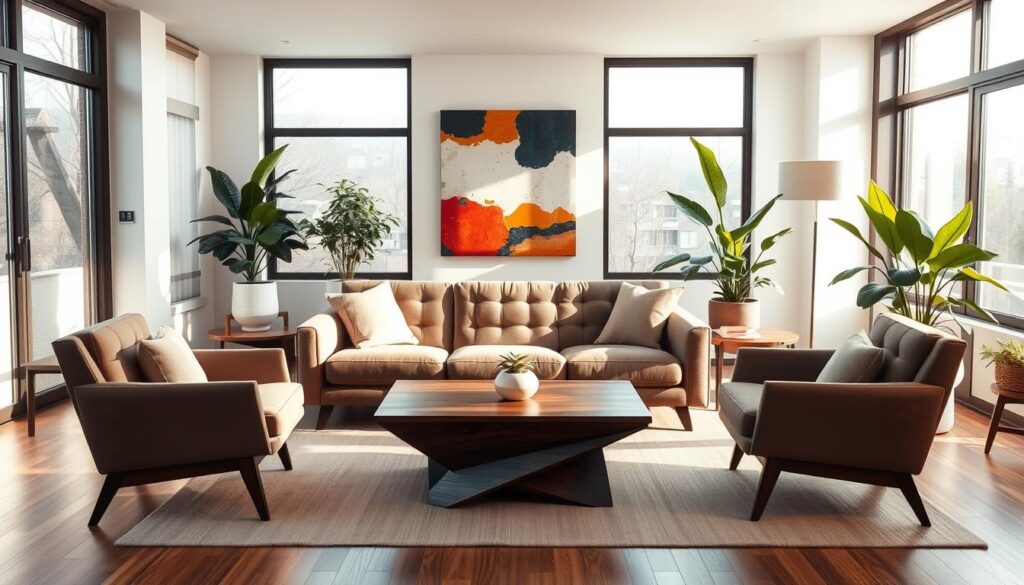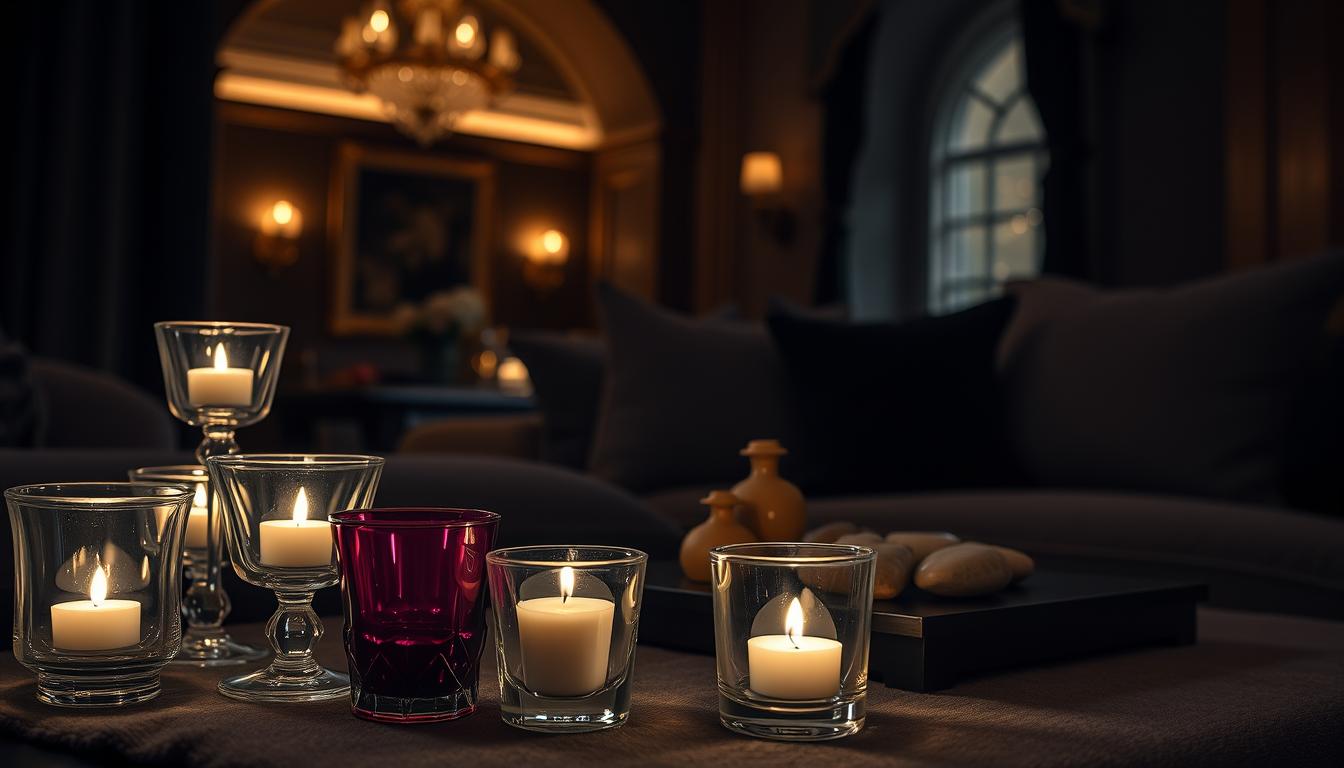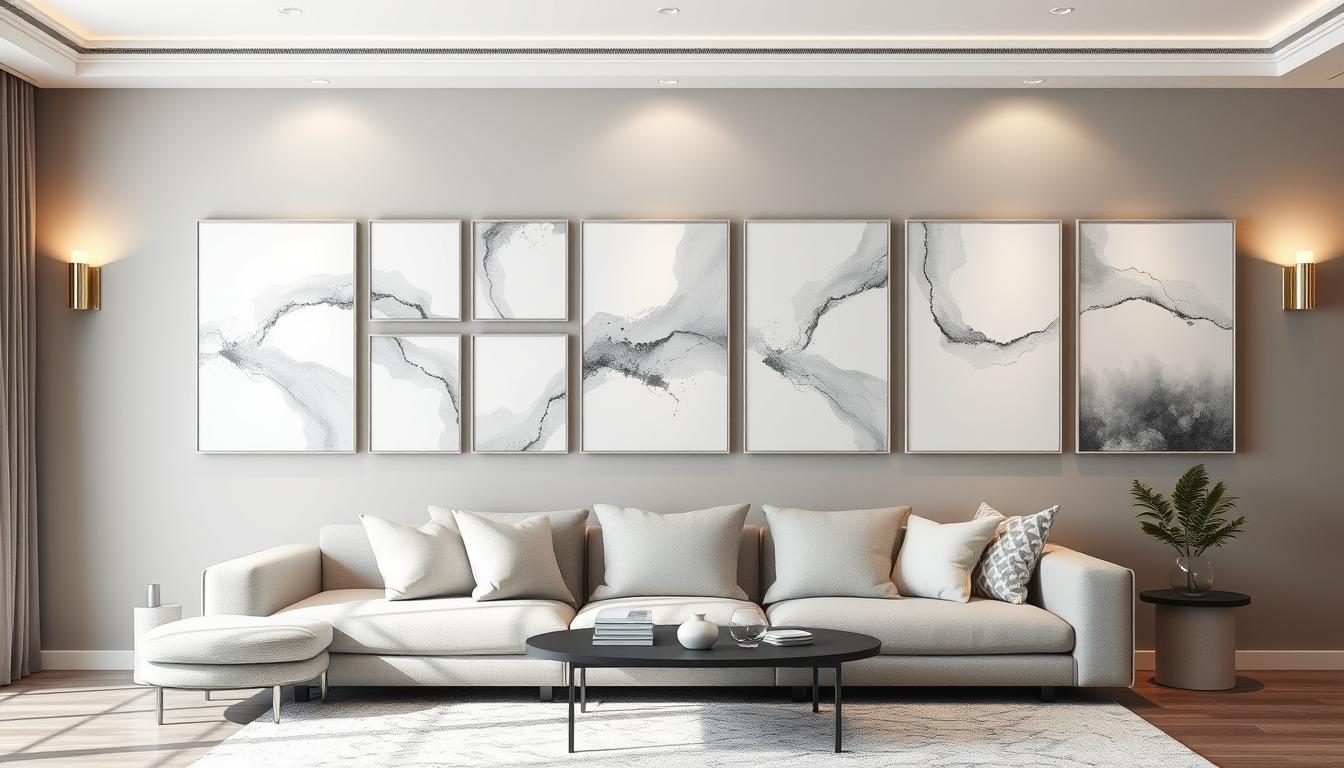Did you know decorating our homes can affect our mood and how productive we are? With so many popular interior design styles out there, it’s easy to make a space that shows off our style.
We’ll take you on a journey through the wide world of interior design. You’ll see everything from modern to traditional styles. Knowing the different styles can help you create a space that’s truly yours.
Key Takeaways
- Discover the various home interior design styles to inspire your next decor project.
- Learn how to blend different styles to create a unique look.
- Understand the characteristics of popular interior design styles.
- Get tips on how to make your chosen style your own.
- Explore the latest trends in interior design.
Understanding Interior Design Styles
To make a space beautiful and useful, knowing interior design styles is key. These styles shape how a space looks and feels. They affect its function and mood.
What Defines Interior Design?
Interior design is all about its style. This style shows the space’s look and how it works. Styles like modern interior design, traditional interior design, and contemporary interior design each have their own special traits. For example, traditional design takes cues from old European styles, aiming for elegance and harmony.
Exploring interior design styles, we see transitional design as a middle ground. It mixes styles for a balanced look. “The secret to great interior design is finding a balance that suits you,” says a famous designer.
Importance of Choosing the Right Style
Picking the right interior design style is vital. It impacts your space’s look, use, and how happy you are with it. The right style can make your home more livable, cozy, and fun.
When picking a style, think about your lifestyle, what you like, and your home’s architecture. Knowing each style’s unique qualities helps you choose wisely. This way, you can create a space that shows who you are and meets your needs.
Modern Interior Design
Modern interior design is more than a style; it’s a lifestyle. It focuses on openness, clarity, and smart space use. This design movement started in the early 20th century and has grown to include many key elements.
Key Features of Modern Design
Modern design is all about clean lines, smooth surfaces, and a minimalist look. Furniture is sleek and simple, making rooms feel open and easy. Materials like metal, chrome, and glass add elegance to any space.
Functionality is a big part of modern design. Every piece in a room is picked for its looks and usefulness. This makes spaces both beautiful and practical.
Popular Color Palettes in Modern Design
In modern design, colors are often neutral and understated. Think whites, blacks, grays, and taupes. These colors let the design’s clean lines and simple decor shine.
| Color | Usage | Effect |
|---|---|---|
| White | Walls, trim | Creates a sense of openness and brightness |
| Gray | Furniture, accents | Adds sophistication and balance |
| Black | Accents, decor | Provides contrast and depth |
Understanding modern interior design helps create stylish and useful spaces. Whether using industrial materials or a simple color scheme, modern design is both versatile and timeless.
Traditional Interior Design
Traditional interior design brings warmth and elegance to homes. It uses rich colors, symmetry, and classic shapes. This style is inspired by the 18th and 19th centuries, creating a harmonious atmosphere.
Characteristics of Traditional Styles
Traditional interior design stands out with several key elements:
- Symmetry: Balanced furniture and decor bring order and stability.
- Rich Color Palettes: Warm colors like reds, golds, and dark woods make spaces cozy.
- Classic Shapes: Furniture often has classic designs, like rolled arms and intricate carvings.
Incorporating Antique Furniture
Antique furniture is crucial in traditional design, adding history and character. Here are tips for using antique pieces:
- Mix and Match: Blend antique furniture with newer items for a unique look.
- Restore with Care: Keep the original finish and craftsmanship of antique pieces.
- Balance with Modern Elements: Mix antique furniture with modern decor to avoid a cluttered feel.
By using these elements, you can create a traditional design that’s both elegant and sophisticated. It shows a deep respect for historical styles and classic beauty.
Contemporary Interior Design
Contemporary interior design is all about change and new ideas. It’s a style that keeps up with the times. This means it’s always fresh, with new trends and technologies.
This design style is unique because it mixes different styles. It creates a space that’s truly yours. Let’s explore how contemporary design blends styles and modern elements.
Fluidity: The Heart of Contemporary Design
At its core, contemporary design is fluid. It stays current in a world that’s always changing. This fluidity lets it mix many styles, from simple to bold, and stay trendy.
Flexibility is crucial in contemporary design. It lets homeowners change their space easily. They can do this with versatile furniture, adaptable colors, and new materials.
Blending with Modern Elements
Contemporary design pairs well with modern elements. This creates a space that’s both stylish and functional. Modern elements like sleek lines and new tech enhance the design.
For example, modern furniture with simple designs fits well with contemporary design. Also, using materials like glass and steel adds texture and depth to a room.
Minimalist Interior Design
Minimalist interior design turns empty space into a cozy and meaningful place. It’s all about simplicity, making spaces look good and feel calm. This design is about keeping things simple and functional.
Core Principles of Minimalism
Minimalist design is all about simplicity and getting rid of what’s not needed. Clean lines, few decorations, and simple colors are key. It makes our spaces calm and clear by focusing on the essentials.
Using a single color or soft tones is a big part of minimalist design. It makes everything look connected and peaceful. This helps make our spaces feel calm and serene.
The Power of Negative Space
Negative space, or empty areas, is vital in minimalist design. It gives our eyes a break and stops the space from feeling too busy. Using negative space wisely makes our spaces look better and feel more balanced.
It also lets our eyes move easily around the space. This makes the few, chosen pieces stand out. It makes our spaces look better and feel more peaceful.
In short, minimalist design is great for making spaces that are both beautiful and useful. By keeping things simple, using clean lines, and negative space, we create spaces that help us relax and feel good.
Industrial Interior Design
This design style comes from old industrial places. It has become a favorite among homeowners. It’s known for its raw, unfinished look. This is achieved by showing off brick walls, pipes, and steel structures.
Elements of Industrial Spaces
Industrial design often uses things found in factories and warehouses. Some key features include:
- Exposed brick walls and ductwork
- Metal beams and steel structures
- Concrete floors
- Reclaimed wood accents
These elements give industrial design its edgy, urban vibe. By using these raw features, homeowners can make a space that’s both modern and unique.
Utilizing Raw Materials
Using raw materials is a big part of industrial design. This includes:
| Material | Characteristics | Uses |
|---|---|---|
| Reclaimed Wood | Rustic, weathered appearance | Furniture, wall accents |
| Exposed Brick | Raw, textured look | Feature walls, fireplaces |
| Metal | Industrial, modern feel | Lighting fixtures, decorative accents |
By using these raw materials, homeowners can add depth and character. This creates a truly unique and eclectic atmosphere.
Industrial design is not just about looks. It’s also about making a space that works well. By mixing raw materials with modern touches, homeowners can get a stylish and functional space.
Rustic Interior Design
Rustic design brings the outdoors inside, celebrating natural materials and textures. It focuses on organic elements like unpolished stone and natural wood. This creates a warm and inviting atmosphere.
Nature’s Influence on Rustic Design
The core of rustic interior design is its connection to nature. It uses natural elements like reclaimed wood and stone. This makes spaces feel warm and cozy.
Key elements of nature-inspired rustic design include:
- Reclaimed and natural wood
- Unpolished stone and rock features
- Earthy tones and neutral colors
- Organic textures, such as woven fibers and natural fabrics
Popular Materials for Rustic Interiors
Rustic interior design uses many natural materials to make spaces unique and inviting. Some top materials include:
Wood, like reclaimed or distressed wood, is key. It’s used for flooring, furniture, and accent walls.
Stone and rock features add a natural, earthy touch to spaces.
Other materials, like natural fibers and woven textiles, add to the cozy, organic feel of rustic interiors.
Scandinavian Interior Design
Scandinavian design is more than a style; it’s a way of life. It focuses on light, function, and nature. This philosophy, from Nordic countries, is loved worldwide for its simplicity, elegance, and comfort.
Characteristics of Scandinavian Aesthetics
Scandinavian design is known for its key traits. Minimalism is central, with clean lines and little decoration. It values function over all. Wood is often used, adding warmth.
The colors are light and calm, like white, beige, and gray. These colors reflect the Nordic skies and make spaces feel bright and open.
Light and Functionality in Design
Light is vital in Scandinavian design. In winter, homes use big windows and mirrors to let in more light. This makes interiors bright.
Function is also key. Furniture is made to be useful, comfy, and flexible. This makes spaces both beautiful and practical.
| Design Element | Characteristics | Benefits |
|---|---|---|
| Minimalist Approach | Clean lines, minimal ornamentation | Creates a sense of calm, reduces clutter |
| Natural Materials | Wood, wool, cotton | Adds warmth, texture, and coziness |
| Light Color Palette | White, beige, gray | Enhances natural light, creates a sense of spaciousness |
| Functional Furniture | Practical, comfortable, versatile | Improves livability, supports minimalist aesthetic |
Farmhouse Interior Design
Farmhouse interior design comes from 17th-century Great Britain. It’s now loved all over the world. You can bring this cozy cottage look into your home, whether you live in a city or a countryside.
This design focuses on simplicity, comfort, and connecting with nature. We’ll look at what makes it special and how to add it to your home.
Rustic Elegance
The beauty of farmhouse style is its rustic elegance. Vintage furniture and natural materials like wood and stone are key. They add warmth and character, making your space cozy and inviting.
To get this look, think about adding antique items like old doors and windows. Exposed beams and wooden floors also add to the farmhouse charm.
Decor Essentials
Decorating a farmhouse-style home needs certain elements. Neutral color palettes, textiles like linen and cotton, and natural fabrics are crucial for a unified look.
| Element | Description | Example |
|---|---|---|
| Vintage Furniture | Antique pieces that add character | Old armchairs, wooden tables |
| Natural Materials | Materials that bring the outdoors in | Wood, stone, brick |
| Neutral Color Palettes | Soft, calming colors | White, beige, gray |
By using these elements, we can make a farmhouse-style home that’s both stunning and welcoming.

Eclectic Interior Design
Eclectic interior design is all about being bold and creative. It’s about mixing different styles and periods to make a space truly yours. This approach celebrates individuality and creativity.
Embracing Diverse Influences
Eclectic design loves to mix things up. It combines modern and traditional pieces to create a unique look. For example, a modern sofa with a vintage armchair adds depth and character.
To make it work, find a common thread. This could be a color scheme, texture, or style. This thread helps tie everything together, making the space feel curated.
Tips for Creating an Eclectic Space
Creating an eclectic space needs careful planning. Here are some tips to help:
- Start with a neutral base: Use neutral colors for walls, floors, and big furniture. This sets a calm background for your eclectic pieces.
- Mix and match: Combine different styles and textures for interest. Try pairing a modern coffee table with a vintage rug and antique side tables.
- Unify with color: Choose a few core colors to tie everything together. This helps the space feel cohesive.
- Edit and curate: Keep your space tidy by regularly editing and curating your pieces. This ensures each item adds to the overall look.
- For more inspiration and guidance on decorating in the eclectic style, you can visit The Spruce, which offers valuable insights and practical tips.
By embracing eclectic design and following these tips, you can create a space that’s truly unique. It will be a reflection of your personality and visually stunning.
Bohemian Interior Design
Bohemian interior design is all about mixing different styles and cultures. It’s perfect for those who love being creative and expressing themselves.
Free-Flowing Spirit
This design style is unique because it combines various styles and periods. It celebrates being different and embracing individuality.
To get this look, mix vintage furniture with global textiles and decor. Layering different patterns and textures makes the space rich and welcoming.
Key Textiles and Patterns
Textiles are key in bohemian design. Some favorites include:
- Colorful rugs and mats
- Vintage or antique fabrics
- Moroccan tiles and kilim patterns
- Natural fibers like jute and sisal
Patterns in bohemian design often have intricate designs and bold colors. Mixing patterns adds depth and interest to a room.
To enhance the bohemian vibe, add natural elements. Plants, wood, and stone add texture and warmth to the space.
Mid-Century Modern Interior Design
The mid-century modern style started in the 1950s and ’60s. It still shapes interior design today with its simple yet useful look. This style focuses on simplicity, clean lines, and organic shapes. It makes spaces feel open and harmonious.

Influential Designers of the Era
Many designers helped shape mid-century modern interior design. Charles and Ray Eames, Eero Saarinen, and Richard Neutra were key. They created furniture that became symbols of the era. Their work showed what was possible in design, blending form and function.
These designers used new materials like molded plywood and fiberglass. This allowed for complex shapes and ergonomic designs. Their work still inspires designers and homeowners today.
| Influential Designer | Notable Works | Design Philosophy |
|---|---|---|
| Charles and Ray Eames | Eames Lounge Chair, Molded Plywood Chair | Emphasized functionality and comfort through innovative use of materials. |
| Eero Saarinen | Tulip Table, Womb Chair | Focused on sculptural forms that combined elegance with simplicity. |
| Richard Neutra | Kaufmann House, Neutra Office Building | Advocated for a seamless integration of indoor and outdoor spaces. |
Reviving Mid-Century Elements Today
To bring mid-century modern style into your home, focus on clean lines and minimal decor. Choose furniture with organic shapes and simple designs. Emphasize functionality in your space.
Here are some ways to add mid-century modern touches:
- Choose furniture with organic shapes and simple silhouettes.
- Use natural materials like wood and leather.
- Add statement lighting that reflects the era’s style.
- Stick to a neutral color palette with bold accents.
By carefully adding these elements, you can make your space feel both modern and timeless.
Choosing the Right Style for Your Home
Exploring different home interior design styles shows each has its own charm. Finding the perfect style for your home starts with knowing what you like.
Personal Taste and Lifestyle
Our choice of interior design style often reflects our lifestyle and preferences. Paying attention to what we’re drawn to helps us find a design that feels right. This can include themes, textures, or moods that tell a story.
Blending Styles
Mixing different interior design styles can create a unique space. It’s important to balance elements well. This way, the design will reflect your personality and feel harmonious.



